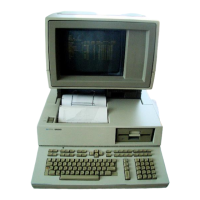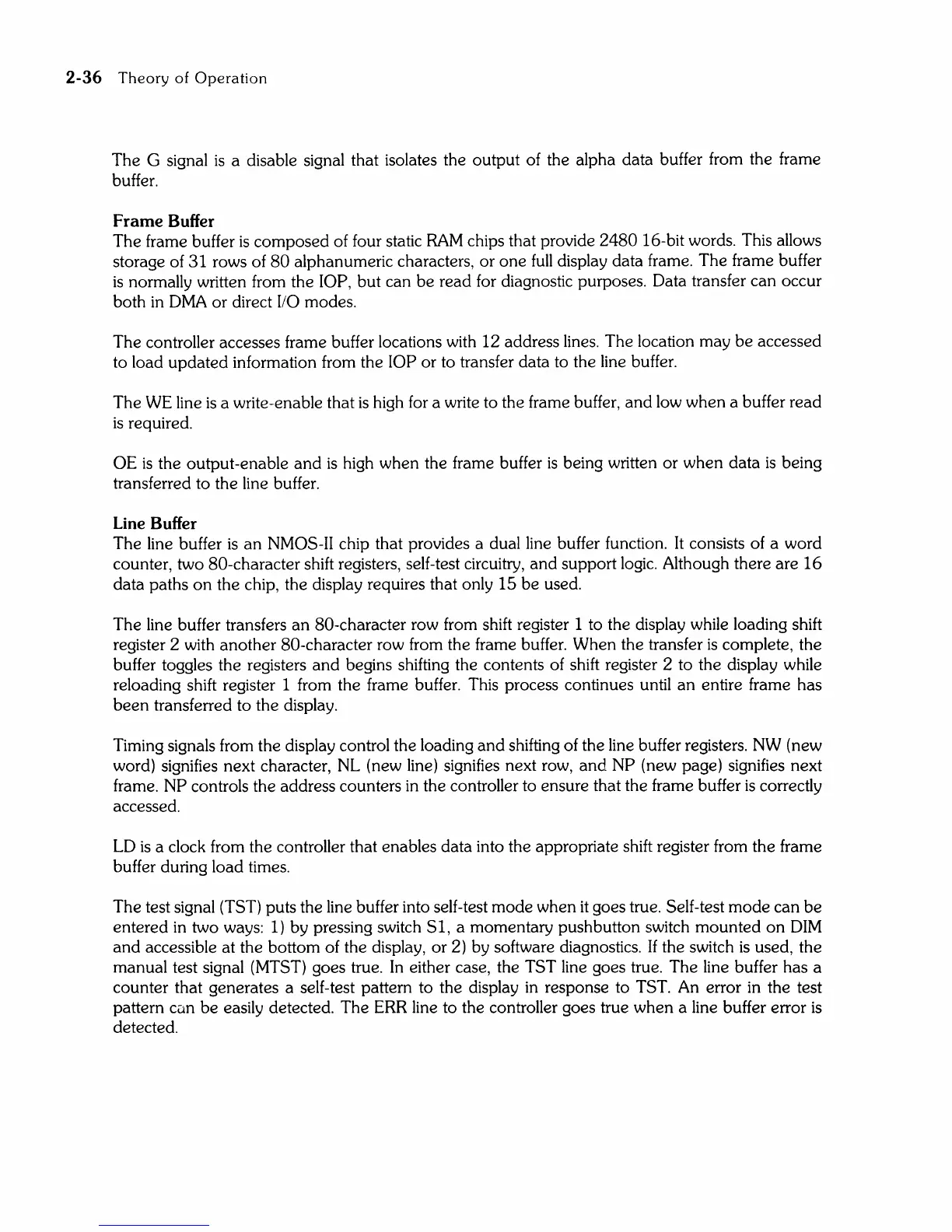2-36
Theory
of
Operation
The G signal
is
a disable signal that isolates the output of the alpha data buffer from the frame
buffer.
Frame Buffer
The frame buffer
is
composed of four static
RAM
chips that provide
2480
16-bit words. This allows
storage of 31 rows of
80
alphanumeric characters, or
one
full
display data frame. The frame buffer
is
normally written from the lOP,
but
can
be
read for diagnostic purposes. Data transfer can occur
both
in
DMA
or
direct
110
modes.
The controller accesses frame buffer locations with 12 address lines. The location may
be
accessed
to load
updated
information from the lOP or to transfer data to the line buffer.
The WE line
is
a write-enable that
is
high for a write to the frame buffer,
and
low when a buffer read
is
required.
OE
is
the output-enable
and
is
high when the frame buffer
is
being written or when data
is
being
transferred to the line buffer.
Line Buffer
The line buffer
is
an
NMOS-II chip that provides a dual line buffer function. It consists of a word
counter, two 80-character shift registers, self-test circuitry,
and
support logic. Although there are
16
data paths
on
the chip, the display requires that only
15
be
used.
The line buffer transfers
an
80-character row from shift register 1 to the display while loading shift
register 2 with
another
80-character row from the frame buffer. When the transfer
is
complete, the
buffer toggles the registers
and
begins shifting the contents of shift register 2 to the display while
reloading shift register 1 from the frame buffer. This process continues until
an
entire frame has
been
transferred to the display.
Timing signals from the display control the loading
and
shifting of the line buffer registers. NW (new
word) signifies next character, NL (new line) signifies next row,
and
NP (new page) signifies next
frame.
NP controls the address counters
in
the controller to ensure that the frame buffer
is
correctly
accessed.
LD
is
a clock from the controller that enables data into the appropriate shift register from the frame
buffer during load times.
The test signal (TST) puts the line buffer into self-test
mode
when
it
goes true. Self-test
mode
can
be
entered in two ways: 1) by pressing switch
Sl,
a momentary pushbutton switch
mounted
on
DIM
and
accessible at the bottom of the display,
or
2) by software diagnostics. If the switch
is
used, the
manual test signal (MTST) goes true.
In
either case, the TST line goes true. The line buffer has a
counter that generates a self-test pattern to the display
in
response to TST. An error in the test
pattern
Clln
be
easily detected. The ERR line to the controller goes true when a line buffer error
is
detected.

